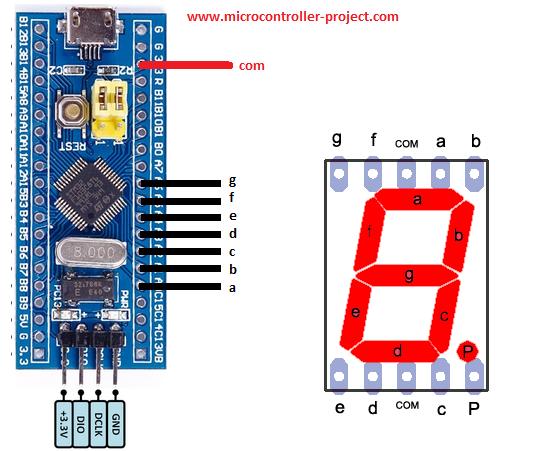- The assigning of values to the elements of the array at the time of its declaration is called initializing of the array. For example, to declare an array “data” of type double with 5 elements, with value 44.3, 88.7, 22.2, 11.9 and 66.3 in elements data0, data1, data2, data3, data4 respectively, the statement is written as.
- This library enables you to use Interrupt from Hardware Timers on an STM32-based board. These STM32 Hardware Timers, using Interrupt, still work even if other functions are blocking. Moreover, they are much more precise (certainly depending on clock frequency accuracy) than other software timers using millis or micros.
- Declaration of array in c. In c/c language we can create single dimensional or multiple dimensional arrays. Declaration of the array is very simple, we need to write array name followed by the data type and square brackets, square brackets contain the size of the array. The size of the array.

STM32 and L3GD20. Three-axis digital output gyroscope. Clock configuration for STM32 microcontroller. SPI and DMA usage example for STM32 MCU. STM32CubeMx and USB. Virtual COM Port with STM32 MCU. STM32 and ADC (Analog-to-digital converter).
In any microcontroller there is at least one general purpose input-output port. STM32 is a not different breed and as expected it also has several GPIO ports. These ports are usually named GPIOA, GPIOB, etc. but unlike most 8/16-bit micros these ports are 16 bit wide. Thus, in general, every port has 16 IO pins. Port pins have several modes of operation and this is what that makes them both robust and complex at first. In development boards the IO port pin naming is cut short and so we’ll find PA0, PB12, etc. instead of GPIOA0, GPIOB12, etc. Even in the reference manuals this short naming is used widely. In the end every I/O pin is general purpose in nature.
Key points with STM32’s GPIO
- Upon any reset event all GPIOs are floating inputs. This prevents any accidental damage to GPIOs in the event of emergency.
- All GPIO registers are needed to be accessed with 32 bit words. This is mandatory.
- Reserved bits for any GPIO register are kept at reset values i.e. 0.
- For every GPIO port there are seven registers but the only the first four are the most important ones. The rest can be ignored most of the times.
- These important GPIO registers per port are CRL, CRH, IDR and ODR. The rest three registers for GPIO ports can be avoided at the beginning.
- For bit set and for bit clear, operations REGx |= (1 << bit) and REGx &= ~ (1 << bit) respectively are very handy and efficient. However MikroC compiler provides bit level access though its internal header file coding like this GPIOB_BSRRbits.BS15. We can use this method or the other one.
- Some IOs are 5V tolerant and are label “FT” in datasheets and other docs. The rest of the I/O pins are not that tolerant and so 3.3V operation should always be ensured. STM32 has a maximum VDD tolerance of 4V but this value shouldn’t be used in any situation for safe operation. Best is to avoid 5V use with GPIOs whenever possible. This will help in avoiding accidental damage to the micro due to common mistakes.
- Unused GPIO pins should be kept at reset state or tied to ground with 10kΩ resistors so that they remain either as floating inputs or safely connected to ground though it’s not a must.
- I/O pins can source or sink currents up to 25mA. Thus direct LED drive is possible with them. To drive loads that need more than this value, we must use external BJTs, MOSFETs, optocouplers, transistor arrays or other driver devices.
- I/O pins should not directly drive inductive or capacitive loads.
- Care should be taken to avoid driving outputs beyond 50MHz. This is the maximum I/O pin frequency rating.
- CRL/H registers essential set GPIO pin operating mode independently as according to the table below:
Stm32 Initialize Array
- CRL sets GPIOs from 0 – 7 while CRH sets from 8 – 15. All IO ports are 16 bit wide unlike common 8 bit micros like PIC or AVR.
CRL Register:
Stm32 Array Declaration Code
CRH Register: